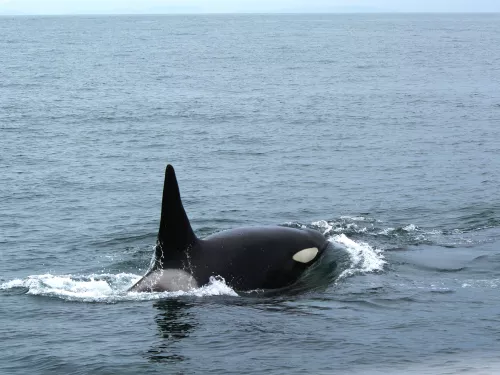Orange-clubbed sea slug
A small colourful sea slug that can be found grazing on sea mats on the rocky shore and beyond the low water mark.
A small colourful sea slug that can be found grazing on sea mats on the rocky shore and beyond the low water mark.
It’s easy to see where these butterflies get their name – the males have bright orange tips on their wings! See them from early spring through to summer in meadows, woodland and hedges.

Orca, sometimes known as ‘killer whales’, are unmistakable with their black and white markings. Although we do have a small group of orca who live in British waters, you would be lucky to see them!
Ordinary moss is very common in gardens and woodlands. moss provides shelter for many minibeasts, so encourage it to grow in your garden by providing logs, stone piles and untidy areas.

A great way to get up close and personal with the magnificent osprey is via one of the many nestcams set-up in the places that it breeds: Scotland, Cumbria, Wales and the East Midlands.

Often growing in swathes along a roadside or field margin, the oxeye daisy is just as at home in traditional hay meadows. The large, white, daisy-like flowers are easy to identify.
Native Oysters are a staple of our seas and our plates - but our love of their taste has lead to a sharp decline all around the UK.
This jagged-shelled sea snail is normally found near its favourite food - oysters!
Oyster mushrooms are shell shaped fungi that grow in tiers or fabulous clusters on dead trees or stumps. Unlike many fungi, these mushrooms are not seasonal and can be found all year round, especially after a cold snap which can trigger the fungus into fruiting.
The loud 'peep-ing' call of an oystercatcher is a recognisable and familiar sound of the seashore. Look out for it hunting on rocky and muddy shores for shellfish to eat. It can also be spotted on some inland waterbodies where it has started to breed.
This slim fish is usually found on gravelly parts of the seabed, close to shore, but can turn up in rockpools.
A well-travelled migrant, the painted lady arrives here every summer from Europe and Africa. This beautiful orange-and-black butterfly regularly visits gardens.